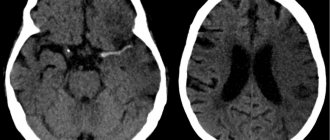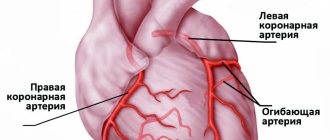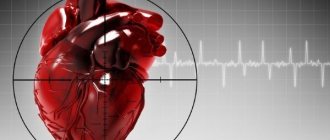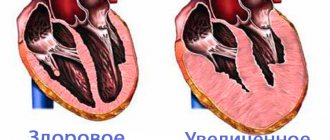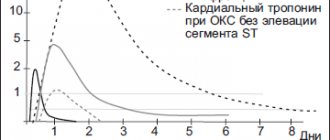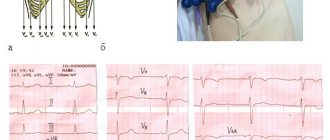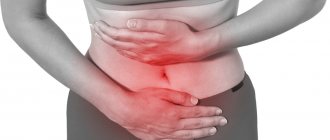Briefly about the treatment method
The use of percutaneous coronary intervention (PCI) as an emergency treatment for myocardial infarction is urgent.
The goal of primary PCI is to open the artery as quickly as possible, preferably within 90 minutes. The treatment method is very effective, often without complications, but, unfortunately, not everywhere patients have the opportunity to seek help on time or get to the hospital on time. Another type of emergency surgery for myocardial infarction is coronary artery bypass grafting (CABG), which is usually performed to simultaneously treat mechanical complications such as papillary muscle rupture or ventricular septal defect accompanied by cardiogenic shock. In uncomplicated MI, mortality can be high when surgery is performed immediately after the infarction.
Modern approaches to the treatment of acute myocardial infarction
Today, myocardial infarction (MI) remains as serious a disease as it was several decades ago.
Here is just one example that proves the severity of this disease: about 50% of patients die before they have time to meet with a doctor.
At the same time, it is clear that the risk of MI for life and health has become significantly lower. After the basic principles of intensive care wards for coronary patients were developed 35 years ago and these wards began to actually work in healthcare practice, the effectiveness of treatment and prevention of cardiac arrhythmias and conduction disorders in patients with myocardial infarction significantly increased and hospital mortality decreased. In the 70s, it was more than 20%, but in the last 15 years, after the role of thrombosis in the pathogenesis of acute MI was proven and the beneficial effect of thrombolytic therapy was shown, in a number of clinics the mortality rate has decreased by 2 times or more.
It must be said that the basic principles and recommendations for the treatment of acute MI, however, as for most other serious pathologies, are based not only on the experience and knowledge of individual clinics, areas, schools, but also on the results of large multicenter studies, sometimes carried out simultaneously in many hundreds of hospitals around the world. Of course, this allows the doctor to quickly find the right solution in standard clinical situations.
The main objectives of treatment of acute MI can be called the following: relief of a painful attack, limiting the size of the primary focus of myocardial damage and, finally, prevention and treatment of complications. A typical anginal attack, which develops in the vast majority of patients with MI, is associated with myocardial ischemia and continues until necrosis occurs of those cardiomyocytes that should die.
One of the proofs of precisely this origin of pain is its rapid disappearance when coronary blood flow is restored (for example, against the background of thrombolytic therapy).
Relieving a pain attack
Pain itself, acting on the sympathetic nervous system, can significantly increase heart rate, blood pressure (BP), and heart function. It is these factors that determine the need to stop a painful attack as quickly as possible. It is advisable to give the patient nitroglycerin under the tongue.
This may relieve pain if the patient has not previously received nitroglycerin for this attack. Nitroglycerin can be in tablet or aerosol form. There is no need to resort to its use if systolic blood pressure is below 90 mm Hg.
Morphine is used all over the world to relieve pain.
which is administered intravenously in fractional doses from 2 to 5 mg every 5–30 minutes as needed until complete (if possible) pain relief.
The maximum dose is 2–3 mg per 1 kg of patient body weight. Intramuscular administration of morphine should be avoided, since the result in this case is unpredictable.
Side effects are extremely rare (mainly hypotension, bradycardia) and are quite easily controlled by elevating the legs, administering atropine, and sometimes plasma replacement fluid.
In elderly people, depression of the respiratory center is uncommon, so morphine should be administered in a reduced (even half) dose and with caution. The antagonist of morphine is naloxone
, which is also administered intravenously, it relieves all side effects, including respiratory depression caused by opiates.
The use of other narcotic analgesics, for example promedol and other drugs of this series, is not excluded. The suggestion that neuroleptanalgesia (a combination of fentanyl and droperidol) has a number of benefits has not been clinically confirmed. Attempts to replace morphine with a combination of non-narcotic analgesics and antipsychotics in this situation are unjustified. Thrombolytic therapy
The main pathogenetic method of treating MI is to restore the patency of the occluded coronary artery. Most often, to achieve this, either thrombolytic therapy or mechanical destruction of the thrombus is used during transluminal coronary angioplasty. For most clinics in our country, the most realistic option today is to use the first method.
The process of necrosis develops extremely quickly in humans and generally ends, as a rule, within 6–12 hours from the onset of an anginal attack, therefore, the faster and more fully it is possible to restore blood flow through the thrombosed artery, the more preserved will be the functional ability of the left ventricular myocardium and ultimately resulting in less mortality. It is considered optimal to start administering thrombolytic drugs 2–4 hours after the onset of the disease.
The success of treatment will be greater if it is possible to reduce the period of time before the start of thrombolytic therapy, which can be done in two ways: the first is early detection and hospitalization of patients in the hospital and rapid decision-making on appropriate treatment, the second is the start of therapy at the prehospital stage.
Our studies have shown that starting thrombolytic therapy at the prehospital stage allows for a gain in time, on average about 2.5 hours.
This method of thrombolytic therapy, if carried out by doctors of a specialized cardiac care team, is relatively safe.
In the absence of contraindications, thrombolytic therapy is advisable for all patients in the first 12 hours of illness. The effectiveness of thrombolytic therapy is higher (42–47% reduction in mortality) if it is started within 1 hour of illness. For periods longer than 12 hours, the use of thrombolytic drugs is problematic and should be decided taking into account the real clinical situation.
Thrombolytic therapy is especially indicated for elderly people, patients with anterior MI, and also in cases where it is started early enough.
A prerequisite for starting thrombolytic therapy is the presence of ST segment elevations on the ECG or signs of bundle branch block.
Thrombolytic therapy is not indicated if
ST
, regardless of how the final phase
of the QRS
on the ECG looks - depressed, negative
T-waves
, or the absence of any changes.
Early initiation of thrombolytic therapy can save up to 30 patients out of 1000 treated.
Today, the main route of administration of thrombolytic drugs is intravenous. All drugs used, first generation thrombolytics
, such as streptokinase (1,500,000 units for 1 hour) - urokinase (3,000,000 units for 1 hour),
second generation
- tissue plasminogen activator (100 mg bolus plus infusion), prourokinase (80 mg bolus plus infusion 1 hour ) – are highly effective thrombolytics.
The risk of thrombolytic therapy is well known - this is the occurrence of bleeding, the most dangerous being cerebral hemorrhage.
The frequency of hemorrhagic complications is low, for example, the number of strokes when using streptokinase does not exceed 0.5%, and when using tissue plasminogen activator - 0.7–0.8%.
As a rule, in case of serious hemorrhages, fresh frozen plasma is administered
and, of course, the administration of the thrombolytic is stopped.
Streptokinase can cause allergic reactions
, which, as a rule, can be prevented by prophylactic administration of corticosteroids - prednisolone or hydrocortisone.
Another complication is hypotension
, which is more often observed when using drugs based on streptokinase; it is often accompanied by bradycardia.
Usually this complication can be stopped after stopping the thrombolytic infusion and administering atropine and adrenaline; sometimes the use of plasma expanders and inotropes is required. Today, suspected aortic dissection, active bleeding, and previous hemorrhagic stroke are considered absolute contraindications to thrombolytic therapy.
On average, only one third of patients with MI receive thrombolytic drugs, and in our country this figure is significantly lower.
Thrombolytics are not administered mainly due to the late admission of patients, the presence of contraindications, or the uncertainty of changes on the ECG. Mortality among patients not receiving thrombolytics remains high and ranges from 15 to 30%. β-blockers
On the 1st day after MI, sympathetic activity increases, therefore the use of β-blockers
, which reduce oxygen consumption by the myocardium, reduce heart function and ventricular wall tension, became the rationale for their use in this category of patients.
A number of large multicenter studies that examined the effectiveness of intravenous b-blockers on the 1st day of MI showed that they reduce mortality in the 1st week by approximately 13–15%. The effect is somewhat higher if treatment begins in the first hours of the disease, and is absent if these drugs are used from the 2-3rd day of the disease. b-blockers also reduce the number of recurrent heart attacks by an average of 15–18%. The mechanism by which b-blockers influence mortality is a reduction in the incidence of ventricular fibrillation and cardiac rupture.
Treatment with b-blockers begins with intravenous administration (metoprolol, atenolol, propranolol) - 2-3 times or as long as necessary to optimally reduce the heart rate. Subsequently, they switch to taking drugs orally: metoprolol 50 mg every 6 hours in the first 2 days, atenolol 50 mg every 12 hours during the day, and then select the dose individually for each patient. The main indications for the use of b-blockers are signs of sympathetic hyperactivity, such as tachycardia in the absence of signs of heart failure, hypertension, pain, and the presence of myocardial ischemia.
b-Blockers, despite the presence of contraindications to their use, for example, bradycardia (heart rate less than 50 per minute), hypotension (systolic blood pressure below 100 mm Hg), the presence of heart block and pulmonary edema, as well as bronchospasm, are used nevertheless, in the overwhelming majority of patients with MI.
However, the ability of drugs to reduce mortality does not extend to the group of b-blockers with their own sympathomimetic activity. If the patient has begun treatment with b-blockers, the drug should be continued until serious contraindications appear. Use of antiplatelet agents and anticoagulants
antiplatelet in acute MI
, in particular
acetylsalicylic acid
, helps reduce thrombosis, and the maximum effect of the drug is achieved quite quickly after taking an initial dose of 300 mg and is stably maintained with daily intake of acetylsalicylic acid in small doses - from 100 to 250 mg / day.
In studies conducted on many thousands of patients, it was found that the use of acetylsalicylic acid reduces 35-day mortality by 23%. Acetylsalicylic acid is contraindicated in case of exacerbation of peptic ulcer disease, with its intolerance, as well as with bronchial asthma provoked by this drug.
Long-term use of the drug significantly reduces the frequency of recurrent heart attacks - up to 25%, so taking acetylsalicylic acid is recommended for an indefinite period.
Another group of drugs that affect platelets are platelet glycoprotein IIB/IIIA blockers. Currently, the effectiveness of the use of two representatives of this class is known and proven - abciximab
and
tiropheban
.
According to the mechanism of action, these drugs compare favorably with acetylsalicylic acid, since they block most of the known pathways of platelet activation. The drugs prevent the formation of a primary platelet thrombus, and their effect is sometimes quite long - up to six months. Worldwide experience is still limited; in our country, work with these drugs is just beginning. heparin
is still widely used , which is mainly prescribed for the prevention of recurrent heart attacks, to prevent thrombosis and thromboembolism. Schemes and doses of its administration are well known. The dose is selected so that the partial thromboplastin time increases by 2 times compared to the norm. The average dose is 1000 IU/hour for 2–3 days; subcutaneous administration of heparin is recommended when patients are slowly mobilized.
Currently there is evidence on the use of low molecular weight heparins
, in particular
enoxyparin
and
fragmin.
Their main advantages are that they actually do not require laboratory monitoring of blood clotting parameters and special equipment, such as infusion pumps, for their administration, and most importantly, they are significantly more effective than unfractionated heparins.
The use of indirect anticoagulants has not lost its importance, especially in cases of venous thrombosis, severe heart failure, and the presence of a blood clot in the left ventricle. Calcium antagonists
Calcium are used as standard therapy for MI
at present, they are actually not used, since they do not have a beneficial effect on the prognosis, and their use from a scientific point of view is unfounded.
Nitrates
Intravenous administration of nitrates during MI in the first 12 hours of the disease reduces the size of the necrosis focus and affects the main complications of MI, including deaths and the incidence of cardiogenic shock.
Their use reduces mortality to 30% in the first 7 days of illness, this is most obvious in anterior localization of infarctions.
Taking nitrates orally starting from the 1st day of the disease does not lead to either an improvement or a worsening of the prognosis by the 30th day of the disease. Intravenous nitrates should be standard therapy for all patients admitted in the early hours of illness with anterior MI and systolic blood pressure greater than 100 mm Hg. Introduce nitroglycerin at a low rate, for example 5 mcg/min, and gradually increase it, achieving a decrease in systolic pressure by 15 mmHg. In patients with arterial hypertension, blood pressure can be reduced to 130–140 mmHg. As a rule, nitrate therapy is carried out within 24 hours unless there is a need to continue this therapy, in particular if pain associated with myocardial ischemia persists or signs of heart failure. ACE inhibitors
angiotensin-converting enzyme
inhibitors have firmly taken their place in the treatment of patients with MI .
This is primarily determined by the fact that these drugs are able to stop the expansion, dilatation of the left ventricle, and thinning of the myocardium, i.e.
influence the processes leading to remodeling of the left ventricular myocardium and accompanied by a serious deterioration in myocardial contractile function and prognosis. As a rule, treatment with ACE inhibitors begins 24–48 hours after the onset of myocardial infarction to reduce the likelihood of arterial hypertension.
Depending on the initially impaired left ventricular function, therapy can last from several months to many years. It was found that treatment with captopril
at a dose of 150 mg/day in patients without clinical signs of circulatory failure, but with an ejection fraction below 40%, significantly improved the prognosis.
In the treated group, mortality was 19% lower, and there were 22% fewer cases of heart failure requiring hospital treatment. Thus, ACEs (captopril 150 mg/day, ramipril 10 mg/day, lisinopril 10 mg/day, etc.)
are advisable to prescribe to most patients with MI, regardless of its location and the presence or absence of heart failure.
However, this therapy is more effective when clinical signs of heart failure and instrumental studies (low ejection fraction) are combined.
In this case, the risk of death is reduced by 27%, i.e. this prevents deaths in every 40 out of 1000 patients treated during the year.
Already during the patient’s stay in the hospital, it is advisable to study his lipid spectrum in detail.
Acute MI itself somewhat reduces the content of free cholesterol in the blood.
If there is data on significant changes in this indicator, for example, when the level of total cholesterol is above 5.5 mmol/l, it is advisable to recommend the patient not only a lipid-lowering diet, but also taking medications, primarily statins.
Thus, currently the doctor has a significant arsenal of tools to help a patient with MI and minimize the risk of complications.
Of course, the main way to achieve this goal is the use of thrombolytic drugs, but at the same time, the use of b-blockers, aspirin, ACE and nitrates can significantly affect the prognosis and outcome of the disease. Enalapril: Ednit
(Gedeon Richter)
Enap
(KRKA)
| Applications to the article |
| The main objectives of the treatment of acute myocardial infarction: 1) relief of a painful attack 2) limiting the size of the primary myocardial lesion 3) prevention and treatment of complications |
| In the absence of contraindications, thrombolytic therapy is advisable for all patients in the first 12 hours of illness. |
| Intravenous nitrates should be therapy for all patients with anterior myocardial infarction and systolic blood pressure greater than 100 mm Hg. |
| TREATMENT SCHEME FOR ACUTE MYOCARDIAL INFARCTION |
Indications and contraindications for the treatment method
Indications for stenting are:
- Myocardial infarction with ST segment elevation.
- Unstable angina and myocardial infarction without ST segment elevation.
- Stable ischemic heart disease.
There are no absolute contraindications to stenting of coronary arteries. The main contraindication is the impossibility of prescribing antiplatelet therapy.
Relative contraindications: acute renal failure, chronic renal failure, ongoing gastrointestinal bleeding, fever of unknown origin, possibly infectious, untreated active infectious process, acute stroke, severe anemia, malignant uncontrolled arterial hypertension, severe electrolyte disturbances, lack of contact with the patient due to with a psychological condition or serious illness, severe concomitant pathology in which coronary angiography can complicate the course of the disease, patient refusal of necessary further treatment (coronary angioplasty, coronary artery bypass grafting, valve replacement), digitalis intoxication, documented anaphylactic reaction to a contrast agent, severe illness peripheral vessels, impeding access to the vascular bed, decompensated congestive heart failure or pulmonary edema, severe coagulopathy, aortic valve endocarditis.
Symptoms of myocardial infarction
The main manifestation of a heart attack is very intense, burning, baking, squeezing, pressing, tearing or “dagger” pain behind the sternum
. The pain may spread to the left arm, scapular region, shoulder, neck, and lower jaw.
The duration of the episode is always more than half an hour, the slightest physical stress causes increased pain. An important sign is the lack of analgesic effect of nitrates. Patients may also experience severe weakness, shortness of breath, rapid heartbeat, sweating, and nausea. Most people feel anxiety, doom, and fear of death.
In addition to the typical variant, there are several more atypical
, capable of masquerading as other diseases of the internal organs. Among these are abdominal (epigastric pain, nausea, vomiting), asthmatic (nasty dry cough, suffocation), cerebral (headache, loss of coordination of movements), arrhythmic, erased version (deterioration of sleep, emotional background, feeling of inexplicable discomfort in the chest, sweating ). It is also possible that there are no symptoms—a “silent” heart attack, which accounts for up to 20% of all MIs.
How the treatment method works
Coronary artery stenting for myocardial infarction includes the following steps:
- A stent is inserted into the narrowing of the coronary artery using a special balloon catheter. A stent is a stainless metal tube with many cells of various configurations.
- When the balloon is inflated, the stent expands in diameter and is pressed tightly into the artery wall, increasing the lumen of the narrowed vessel, which allows blood to flow freely to the heart.
- The balloon is deflated and removed, while the stent remains permanently in place at the site of narrowing or blockage.
Coronary artery bypass grafting is performed on an open heart. The idea is to create a bypass (shunt) from the aorta to the coronary artery, bypassing the site of blockage or narrowing. Usually the material for the shunt is the person’s own vein; sometimes it is necessary to use artificial material. Your attending physician will tell you in more detail about the stages of coronary artery bypass surgery itself.
General information
As statistical studies show, myocardial infarction most often develops in men aged 40 to 60 years. In women, this disease occurs approximately one and a half to two times less often.
Myocardial infarction occurs in patients with coronary heart disease (CHD), atherosclerosis, and arterial hypertension. Risk factors for the development of myocardial infarction include smoking (as it causes a narrowing of the coronary vessels of the heart and reduces the blood supply to the heart muscle), obesity, and lack of physical activity.
At the same time, myocardial infarction may be the first manifestation of IHD.
Unfortunately, myocardial infarction is now one of the main causes of disability in adulthood, and the mortality rate among all patients is 10-12%.
Observation program after treatment method
Cardiac rehabilitation aims to optimize function and quality of life in those suffering from heart failure. Exercise is an important part of rehabilitation after a myocardial infarction, which has beneficial effects on cholesterol levels, blood pressure, weight, stress and mood. Some patients are afraid of exercise because it can cause another heart attack. But you need to understand that the doctor, upon discharge, indicates the required dosed physical activity. The risk of another heart attack is reduced with strict blood pressure control and lifestyle changes, mainly smoking cessation, regular exercise, a sensible diet for heart disease patients, and limiting alcohol consumption. Drugs are typically prescribed after a myocardial infarction to prevent secondary cardiovascular events, such as further myocardial infarctions, congestive heart failure, or cerebrovascular disease.
